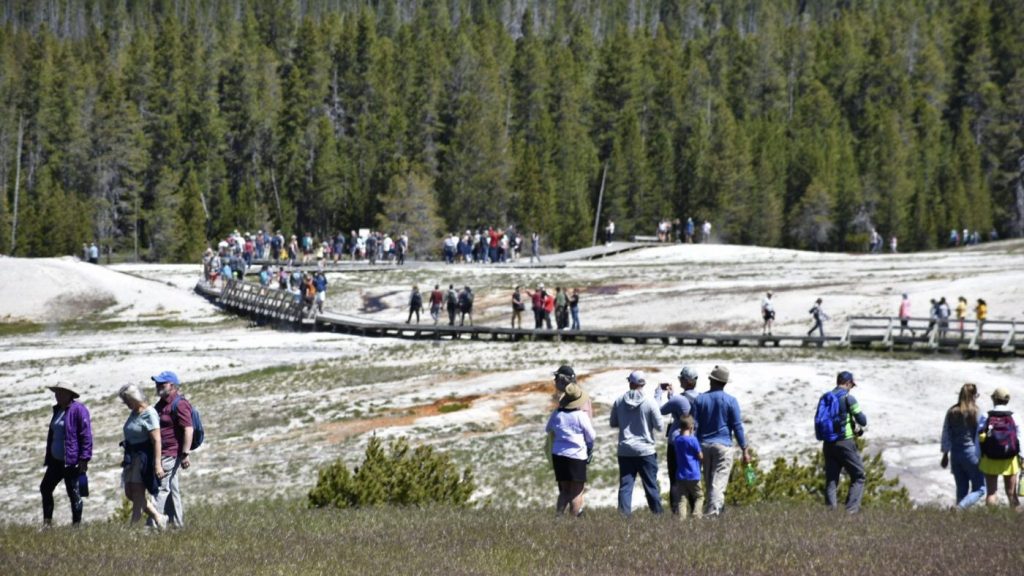Almost 90 percent of these emissions are from transportation to and from the park, as per a study published in PLOS Climate.
The authors, a team of researchers from the U.S. Geological Survey, Utah State University and Clemson University, suggested that the tourism industry needs strategies to reduce emissions and reach global carbon dioxide emission reduction targets. To determine the extent and origins of the park-related emissions, the authors gathered and analyzed data from Yellowstone visitor surveys, scientific studies and government data..
The authors found that 35 percent of visitors who fly to the area produce 72 percent of emissions related to transit to and from the park.
On average, each visitor generated about 479 kilograms, or 1,056 pounds, of carbon dioxide emissions.
For comparison, the average annual per capital carbon dioxide emissions were 4,600 kilograms globally or 14,700 kilograms for U.S. residents in 2019.
The authors proposed several action plans to reduce tourism-related emissions at Yellowstone and other national parks, including marketing strategies about travel alternatives and internal technological innovations and energy-saving measures.
The authors also stressed that improvements like a transition to fuel-efficient vehicles and renewable power supplies at accommodations outside the park would be beyond park management’s control.
The authors highlighted the personal, social, and economic benefits of nature-based tourism, but warned about the environmental costs, particularly carbon dioxide emissions.
They concluded that strategically influencing aspects of park tourism can reduce emissions while still providing visitor enjoyment.
A recent study discovered that tourism to Yellowstone National Park creates 1.03 megatons, which is more than 1.03 billion kilograms or 2.3 billion pounds, of carbon dioxide emissions annually. The study, released on Wednesday in PLOS Climate, indicates that almost 90 percent of these emissions are connected to travel to and from the park.
The authors also stressed that many improvements would be out of park management’s hands — including a broader transition to fuel-efficient vehicles and a switch to renewable power supplies at accommodations outside the grounds.
“Nature-based tourism provides numerous personal and social benefits to tourists,” the authors stated, also noting the industry’s economic importance.
“This is certainly true in the western United States, where many state governments actively promote outdoor recreation and tourism at national parks and other public lands to out-of-state and out-of-country market,” they continued.
But the researchers also warned against focusing only on social and economic benefits, which they said masks “many environmental costs of tourism.” Chief among these impacts are carbon dioxide emissions, as tourism is responsible for 8 percent of these releases globally, the authors noted.
“Instead of reducing visitation, strategically influencing aspects of park tourism can reduce emissions while still providing visitor enjoyment,” they concluded.









